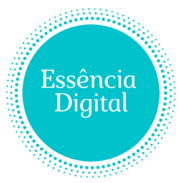Introduction: Why Freelance Translation is a Thriving Global Opportunity
In an age of unprecedented global connectivity, the need for clear and nuanced communication across languages has never been more critical. Businesses are no longer confined by borders; content creators reach audiences on every continent, and scientific and legal collaborations span the globe. At the heart of this interconnected world is the professional translator, a vital bridge for culture, commerce, and ideas.
Becoming a freelance translator is more than just a job; it’s an opportunity to build a flexible, intellectually stimulating, and profitable business from anywhere in the world. You can work with cutting-edge tech companies, esteemed publishing houses, or life-saving medical organizations. But transforming your linguistic talent into a sustainable career requires strategy, dedication, and a professional mindset. This comprehensive guide will walk you through the essential steps to launch and grow a rewarding freelance translation business.
Step 1: Foundational Assessment of Your Language Skills and Specialization
Before you can market your services, you must conduct a frank assessment of your core competencies. This foundation will determine your market position, your rates, and your long-term success.
- Go Beyond Fluency to Mastery: Professional translation demands more than conversational fluency. You need an intuitive and profound command of your chosen languages. This includes not just the source language (the original text) but also, and most importantly, the target language (your output). For your target language, native or near-native proficiency (equivalent to the C2 level on the Common European Framework of Reference for Languages) is the industry standard. This ensures your translations are not only accurate but also natural and well-written.
- Strategically Choose Your Language Pairs: While passion for a language is important, market demand is crucial for business viability. High-demand pairs often involve English (e.g., English ↔ Spanish, German, Mandarin, Japanese, French, Portuguese). However, don’t discount less common pairs, as they can have less competition and command higher rates. Research the demand in your desired fields.
- Identify a Profitable Niche: Generalist translators face immense competition. Specializing allows you to become an expert, attract higher-quality clients, and charge premium rates. Consider fields you have experience in or a passion for:
- Technical Translation: Manuals, patents, and scientific papers. Requires precision and subject matter expertise.
- Legal Translation: Contracts, court documents, and compliance paperwork. Demands meticulous accuracy and knowledge of legal systems.
- Medical & Pharmaceutical Translation: Clinical trial documentation, patient records, and research. This field has zero tolerance for error.
- Marketing & Transcreation: Ad copy, websites, and social media campaigns. Requires creativity and cultural adaptation to preserve intent and impact.
- Video Game Localization: Scripts, user interfaces, and marketing materials. A rapidly growing field that blends creative and technical skills.
- Master Cultural Nuances: Translation is not a word-for-word substitution. It’s localization. A great translator adapts idioms, humor, cultural references, and even visual layouts to resonate with the target audience. Misunderstanding cultural context can lead to embarrassing or offensive errors, making your skills in this area a key selling point.
Step 2: Gaining Credibility Through Qualifications and Certifications
Clients need to trust that you can deliver high-quality work. Credentials are the most effective way to build that trust before they’ve even worked with you.
- Formal Education: A university degree in Translation, Linguistics, or a related field provides a strong theoretical foundation. A degree in a specialized field like Law, Engineering, or Life Sciences combined with language skills can make you an incredibly valuable asset in that niche.
- Industry-Recognized Certifications: Certifications are a powerful signal of your professional competence. They prove you have been vetted by a respected industry body. Key certifications include:
- ATA Certification (American Translators Association): Highly respected, particularly in the North American market.
- ITI Qualification (Institute of Translation & Interpreting): A key credential in the UK and Europe.
- Country-specific accreditations (e.g., NAATI in Australia).
- Passing these rigorous exams can be a game-changer, opening doors to premium agencies and direct clients.
- Build Experience Through Volunteering: If you’re just starting, offer your services to non-profit organizations. Groups like Translators Without Borders provide invaluable experience on meaningful projects and demonstrate your commitment to the profession.
Step 3: Building a Powerful and Targeted Portfolio
Your portfolio is your single most important marketing tool. It’s your chance to demonstrate your expertise and let your work speak for itself.
- Showcase Your Best, Most Relevant Work: Select 3-5 high-quality samples that represent your chosen specialization and language pairs. If you don’t have paid work to show yet, translate publicly available texts (like a news article, a marketing blog post, or a short technical document) to create samples.
- Provide Context for Every Sample: Don’t just show the final text. Use a “before-and-after” format. Present a short excerpt of the source text, your translation, and a brief description of the project. Explain the objective, the target audience, and any specific challenges you overcame. This shows your strategic thinking.
- Create a Professional Online Presence: A personal website is the ideal home for your portfolio. It’s your digital storefront. Additionally, build a robust profile on platforms like LinkedIn, ProZ.com, and TranslatorsCafe. These sites are where many clients search for talent. Ensure your profile is 100% complete, featuring a professional photo, your credentials, and a clear description of your services.
Step 4: Setting Up Your Freelance Business Infrastructure
To succeed, you must operate like a business, not a hobbyist. This means setting up the right systems and tools from day one.
- Clearly Define Your Service Offerings: Be specific. Do you offer:
- Translation: The standard conversion of written text.
- Localization: Adapting content for a specific region, including cultural and formatting changes.
- Transcreation: A creative blend of translation and copywriting, often used for marketing.
- Editing & Proofreading: Reviewing translations done by others.
- Subtitling: Translating video content.
- Establish Your Rates with Confidence: Research the market rates for your language pair and specialization. Common pricing models include:
- Per Word: The industry standard. Simple and transparent for clients.
- Per Hour: Best for editing, proofreading, or highly creative projects where word count is not a good measure of effort.
- Per Project: A flat fee for an entire project, providing cost certainty for the client.
- Prepare Your Business Documents: Have professional templates ready for quotes, contracts, and invoices. Your contract should clearly state the scope of work, deadlines, payment terms (e.g., Net 30), and your policy on revisions.
- Invest in Computer-Assisted Translation (CAT) Tools: CAT tools are non-negotiable for serious freelancers. They are not machine translation. These tools use translation memory (TM) to ensure consistency, manage terminology with glossaries, and significantly improve your speed and accuracy. Many clients require proficiency in tools like SDL Trados Studio, MemoQ, or cloud-based platforms like Memsource (now Phrase TMS) and Wordfast.
Step 5: A Multi-Channel Strategy for Finding Your First Clients
Getting your first few clients is often the biggest hurdle. A proactive, multi-pronged approach is most effective.
- Translation Agencies: Agencies are a great source of consistent work. They handle the client acquisition and project management, leaving you to focus on translating. Research agencies that specialize in your niche and follow their application process carefully.
- Freelance Platforms: While platforms like Upwork, Fiverr, ProZ.com, and TranslatorsCafe are competitive, they can be good for building initial experience and getting testimonials. Create a standout profile and write targeted proposals for each job.
- Direct Outreach (Cold Emailing): Identify companies in your niche that could benefit from your services (e.g., tech startups, law firms, e-commerce brands looking to expand). Send a concise, professional email introducing yourself, explaining the value you can provide, and linking to your portfolio.
- Professional Networking: Join translator associations and participate in online forums and webinars. Building relationships with fellow translators can lead to referrals when they are overbooked or receive a request outside their specialization.
Step 6: Delivering Excellence and Building Lasting Client Relationships
Your reputation is built on reliability and quality. Turning a one-time project into a long-term partnership is the key to a stable freelance income.
- Always Prioritize Quality Over Speed: Meet your deadlines, but never at the expense of accuracy. A rushed job with errors can permanently damage your reputation.
- Communicate Proactively: If you have questions about the source text or the project brief, ask them early. This shows you are engaged and committed to getting it right.
- Provide Extra Value: If you spot an error or an awkward phrase in the source text, politely point it out to the client. This positions you as a valuable partner, not just a service provider.
- Seek Feedback and Testimonials: After successfully completing a project, ask your client for a testimonial. Positive reviews are powerful social proof that you can feature on your website and professional profiles.
Step 7: Advancing Your Practice and Increasing Your Income
A freelance career is a journey of continuous improvement. Stagnation is the enemy of growth.
- Commit to Lifelong Learning: Languages and industries evolve. Stay updated on new terminology in your niche, take advanced courses in your CAT tool, and refine your writing skills.
- Strategically Increase Your Rates: As you gain experience, testimonials, and demand for your services, you should raise your rates. A common practice is to increase them incrementally once a year, giving your long-term clients plenty of notice.
- Become the Go-To Expert: Deepen your specialization even further. Instead of just “legal translation,” you could become the expert in “intellectual property law for the German market.” This level of expertise commands the highest fees.
Conclusion: Your Journey from Linguist to Global Business Owner
Building a career in freelance translation is a marathon, not a sprint. It requires a blend of deep linguistic skill, sharp business acumen, and a relentless commitment to quality. By methodically building your credentials, creating a powerful portfolio, and fostering professional client relationships, you can move beyond simply converting words. You become a crucial partner in helping businesses and creators connect with the world. Take your passion for language and forge it into a thriving, independent, and globally-minded career.

